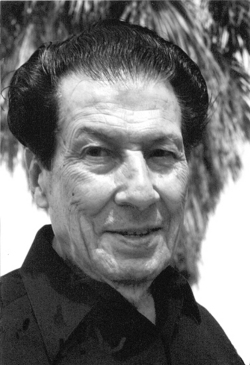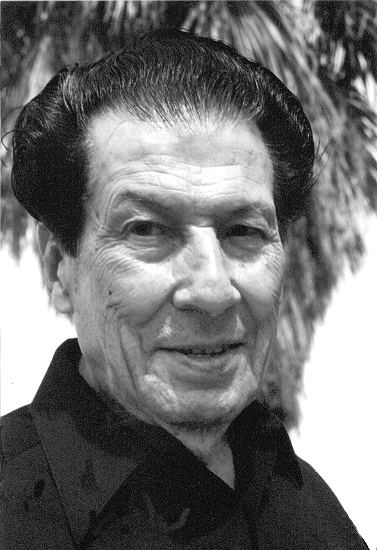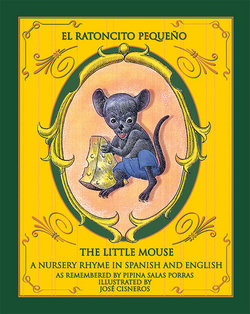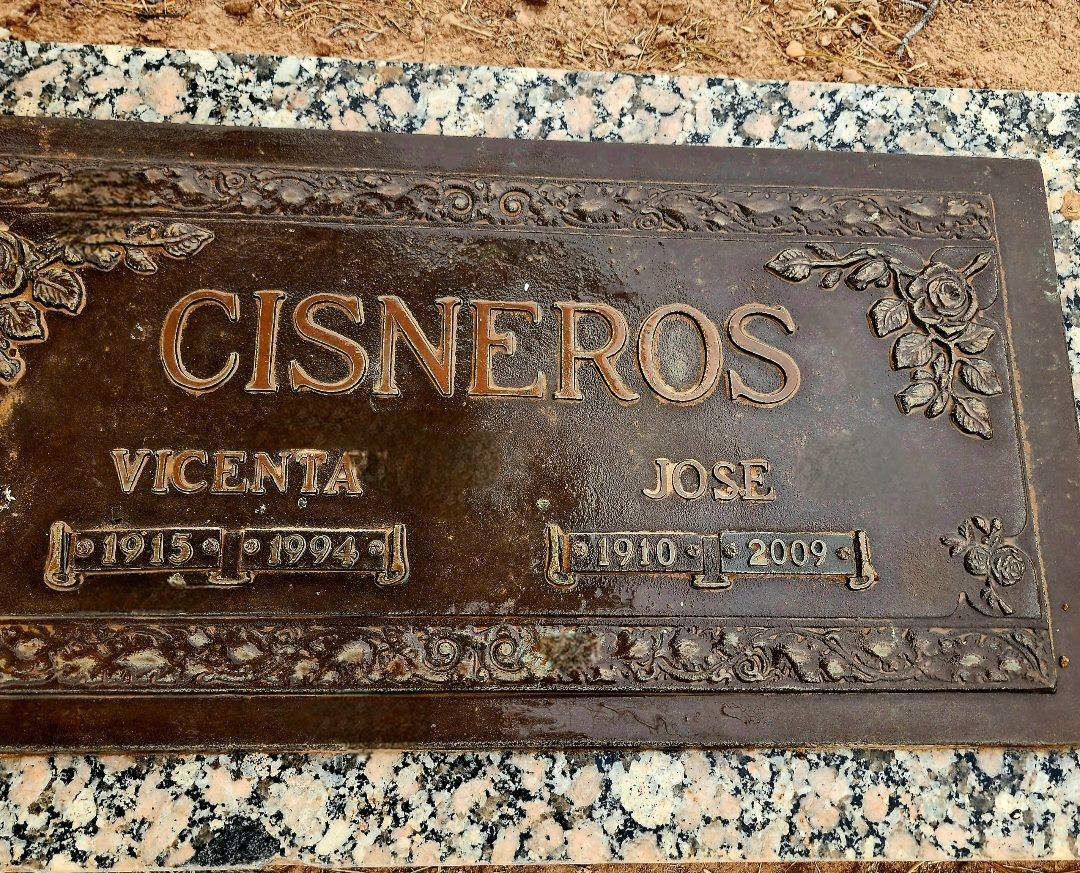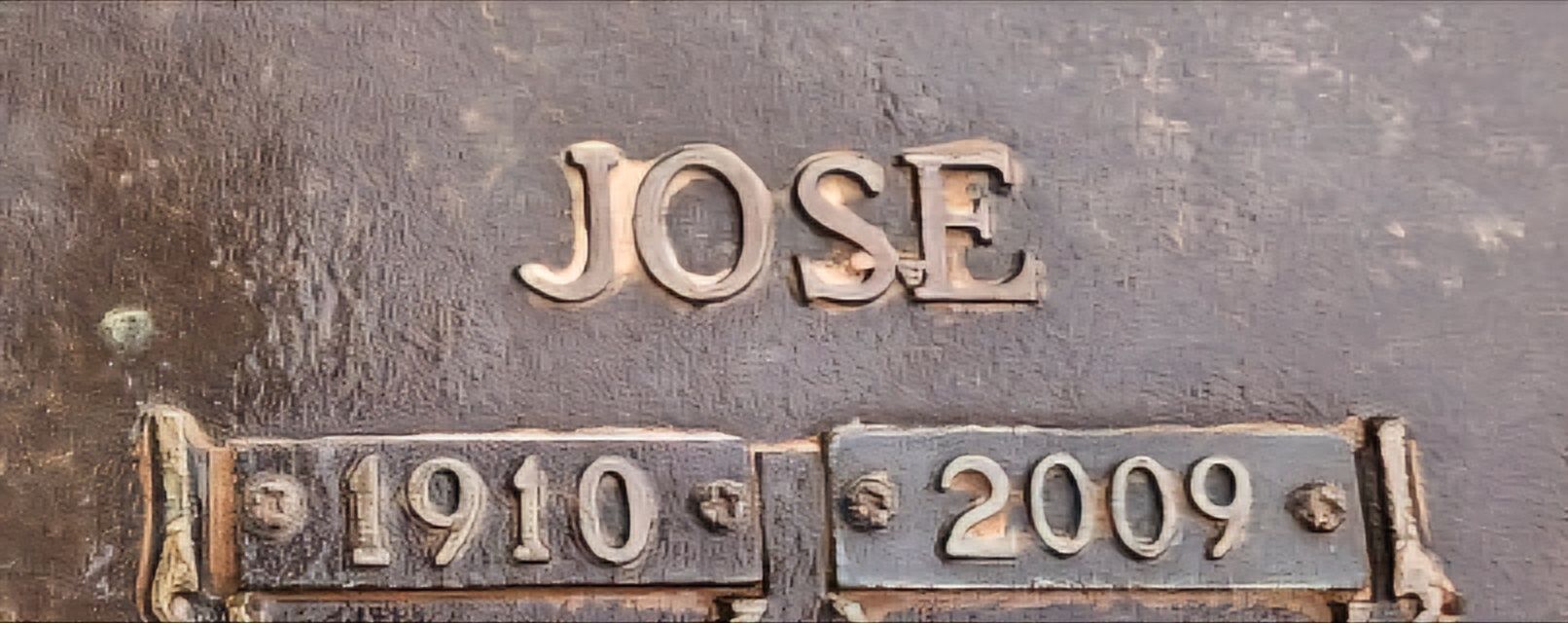Cisneros, regarded as a legend for his vivid pen-and-ink sketches of Spanish conquistadores, Franciscan missionaries, frontier settlers and Apache warriors, was 99.
He died of natural causes at an El Paso foster-care home where he was admitted two weeks ago, according to his family.
Born in Villa Ocampo, Durango, in 1910, Cisneros had only a fifth-grade education but was revered as a historian with a sketch pad, an artist who illustrated more than 300 historical books and publications. Stories of the United States-Mexico border and the Southwest burst alive with Cisneros' touch and meticulous attention to detail.
Often described as a world-class illustrator, Cisneros built an international reputation with pen-and-ink illustrations of Mexican, American and Spanish history. He was best known for detailed pen-and-ink drawings of horses and Spanish horsemen that he often described as his favorite subjects.
News of Cisneros' death triggered widespread tributes and condolences. The artist was so modest that he said he never had his work appraised.
"He was an El Paso treasure. We were hoping to celebrate his 100th birthday," El Paso gallery owner Adair Margo said. "He aspired to be a world-class illustrator and he became one."
Collectors of Cisneros' art include former President George W. Bush and his wife. Former first lady Laura Bush once described Cisneros as a friend and "a magnificent artist and important historian of the Southwest."
King Juan Carlos of Spain knighted Cisneros for contributing to the understanding of history through his art. In 2001, President Bush awarded Cisneros the National Humanities Medal for his work as an artist and historian. Cisneros also received the National Cowboy Hall of Fame Wrangler Award in 1985 for his book, "Riders Across the Centuries."
Bobby Byrd, owner of Cinco Puntos Press, published Cisneros' "El Ratoncito Pequeño / The Little Mouse," a nursery rhyme in Spanish and English.
"I always admired him and loved being around him," Byrd said. "He had this real traditional aesthetic and a precise way of going about himself. His craftsmanship was admirable -- delicate, traditional and very, very expressive.
Felix Almaráz Jr., a professor of history at the University of Texas at San Antonio and contributor to "Borderlands: The Heritage of the Lower Rio Grande Through the Art of José Cisneros" once said of the artist: "Cisneros finds little nuggets of information and then translates them into an artistic expression of high quality."
Timid about speaking in public, Cisneros was a devout Catholic who went to Mass daily. He counted the late El Paso artist Tom Lea among his friends and mentors. He often advised John Houser, creator of "The Equestrian" sculpture at El Paso International Airport.
Relatives said Cisneros received his last sacraments Friday at Loving Hands Foster Care in Central El Paso.
"We all told him we loved him and kissed him good-bye," his daughter Patricia Cisneros Pride said, adding that her father always taught the community to "value work, live every day, and to thank God for everything they have."
Ever modest about his legacy, Cisneros questioned in a recent interview with El Paso Times' Style magazine whether he deserved a lifetime of accolades.
"My work is what has given me the name that I have, but I don't think I deserve it because there have been a lot of great artists in El Paso who have been forgotten," he said. "There is no recognition of them and they were lost forever."
Cisneros taught himself to read and write. Displaced by the Mexican Revolution of 1910, his family eventually settled in El Paso-Juárez
West Side resident Andy Saenz worked with Cisneros at City Lines, a company where Cisneros once painted buses.
"It was an honor to know him," Saenz said, recalling a co-worker who shunned having a beer with the guys after work and instead rushed home to work overnight in his basement on the detailed pieces for which the artist is now known.
El Paso artist Bill Rakocy befriended Cisneros 30 years ago and admired his discipline and humanitarian traits.
"He was one of the most talented people I've ever known," Rakocy said.
John O. West, a retired University of Texas at El Paso professor and Cisneros' biographer, once described him as a giant in accurately depicting Southwestern history. "If we didn't have people like José, we'd forget our past. He tells the truth, yet he has a romantic attitude," West said once.
West and his wife, Lucy, escorted Cisneros to Spain in 1998, where he became the first recipient outside of the country to receive the prestigious Universidad de Alcalá Award.
"His legacy is the rich scholarship of Spanish influence on the Southwest," Lucy West said. "He was a classic gentleman, a very humble man."
Cisneros' work has hung in the governor's mansion in Austin, the Palace of the Governors Museum in Santa Fe and the Institute of Texan Cultures in San Antonio.
Cisneros is survived by daughters Magdalena Villarreal, Irene Cisneros Solla, Patricia Cisneros Pride and Rita Sillas; 10 grandchildren; 13 great-grandchildren; and one great-great-grandchild. He was preceded in death by his wife, Vicenta, and a daughter, Inez. Funeral services are pending.
Color-blind since birth, Cisneros continued to draw in recent years until his vision deteriorated to the point that he had trouble writing his name. He never lost or abandoned his passion for a lifetime of artistic and literary work that brought him widespread recognition over the years, fame that he often downplayed.
"I'll die with my pen on the paper," he once said.
El Paso Times, November 15, 2009
(Article by Ramón Rentería with assistance by
Isabel A. Rodriguez, April Lopez and Zahira Torres)
_______________________________
Obituary
El Paso Times, November 16, 2009
Jose Cisneros (99), the artist, died peacefully Saturday morning of natural causes. His historical illustrations depicting the borderlands are internationally acclaimed, most notably by former President George W. Bush, when he awarded Jose the National Medal of the Humanities in 2002. Jose's life began humbly on a ranch in Villa Ocampo, Durango, Mexico, but the Mexican Revolution forced him and his family north. The mostly self-taught artist's love of drawing began as a young boy. His formal education only reached the sixth grade, yet his love of learning, especially history, never ceased. Jose combined these two passions in his pen-and-ink historical illustrations which grace the pages of hundreds of books. A very spiritual man, Jose walked to daily Mass up until the very last few weeks of his life. Jose had a great adoration of nature, passion for the arts, and fondness for Spain. He is preceded by his wife, Vicenta, and eldest daughter, Inez Watson. He is survived by his four remaining daughters: Irene Solla, Magdalena Villarreal (Robert), Patricia Cisneros-Pride, and Rita Sillas (Ray). He also leaves behind 10 grandchildren, 13 great-grandchildren, and 1 great-great-grandchild. His family will always remember Jose's zest for life, sense of humor, and strong will. He will be greatly missed. The viewing will be at Martin Funeral Home on Montana from 1:00 pm to 3:00 pm on Tuesday, November 17, followed by the rosary at 7:00 p.m to be held at St. Joseph's Catholic Church on Hueco St. Visitation will also be at St. Joseph Catholic Church from 5 p.m to 8 p.m. The Funeral Mass will also be held at St. Joseph's on Wednesday, November 18, at 9:30 a.m., followed by the burial at Mt. Carmel Cemetery. The Pallbearers will be Tony Medrano, Willie Montoya, Martin Lopez, Steve Villarreal, Ray Sillas, Chris Connerly, Xavier Villarreal, and Vince Villarreal.
Cisneros, regarded as a legend for his vivid pen-and-ink sketches of Spanish conquistadores, Franciscan missionaries, frontier settlers and Apache warriors, was 99.
He died of natural causes at an El Paso foster-care home where he was admitted two weeks ago, according to his family.
Born in Villa Ocampo, Durango, in 1910, Cisneros had only a fifth-grade education but was revered as a historian with a sketch pad, an artist who illustrated more than 300 historical books and publications. Stories of the United States-Mexico border and the Southwest burst alive with Cisneros' touch and meticulous attention to detail.
Often described as a world-class illustrator, Cisneros built an international reputation with pen-and-ink illustrations of Mexican, American and Spanish history. He was best known for detailed pen-and-ink drawings of horses and Spanish horsemen that he often described as his favorite subjects.
News of Cisneros' death triggered widespread tributes and condolences. The artist was so modest that he said he never had his work appraised.
"He was an El Paso treasure. We were hoping to celebrate his 100th birthday," El Paso gallery owner Adair Margo said. "He aspired to be a world-class illustrator and he became one."
Collectors of Cisneros' art include former President George W. Bush and his wife. Former first lady Laura Bush once described Cisneros as a friend and "a magnificent artist and important historian of the Southwest."
King Juan Carlos of Spain knighted Cisneros for contributing to the understanding of history through his art. In 2001, President Bush awarded Cisneros the National Humanities Medal for his work as an artist and historian. Cisneros also received the National Cowboy Hall of Fame Wrangler Award in 1985 for his book, "Riders Across the Centuries."
Bobby Byrd, owner of Cinco Puntos Press, published Cisneros' "El Ratoncito Pequeño / The Little Mouse," a nursery rhyme in Spanish and English.
"I always admired him and loved being around him," Byrd said. "He had this real traditional aesthetic and a precise way of going about himself. His craftsmanship was admirable -- delicate, traditional and very, very expressive.
Felix Almaráz Jr., a professor of history at the University of Texas at San Antonio and contributor to "Borderlands: The Heritage of the Lower Rio Grande Through the Art of José Cisneros" once said of the artist: "Cisneros finds little nuggets of information and then translates them into an artistic expression of high quality."
Timid about speaking in public, Cisneros was a devout Catholic who went to Mass daily. He counted the late El Paso artist Tom Lea among his friends and mentors. He often advised John Houser, creator of "The Equestrian" sculpture at El Paso International Airport.
Relatives said Cisneros received his last sacraments Friday at Loving Hands Foster Care in Central El Paso.
"We all told him we loved him and kissed him good-bye," his daughter Patricia Cisneros Pride said, adding that her father always taught the community to "value work, live every day, and to thank God for everything they have."
Ever modest about his legacy, Cisneros questioned in a recent interview with El Paso Times' Style magazine whether he deserved a lifetime of accolades.
"My work is what has given me the name that I have, but I don't think I deserve it because there have been a lot of great artists in El Paso who have been forgotten," he said. "There is no recognition of them and they were lost forever."
Cisneros taught himself to read and write. Displaced by the Mexican Revolution of 1910, his family eventually settled in El Paso-Juárez
West Side resident Andy Saenz worked with Cisneros at City Lines, a company where Cisneros once painted buses.
"It was an honor to know him," Saenz said, recalling a co-worker who shunned having a beer with the guys after work and instead rushed home to work overnight in his basement on the detailed pieces for which the artist is now known.
El Paso artist Bill Rakocy befriended Cisneros 30 years ago and admired his discipline and humanitarian traits.
"He was one of the most talented people I've ever known," Rakocy said.
John O. West, a retired University of Texas at El Paso professor and Cisneros' biographer, once described him as a giant in accurately depicting Southwestern history. "If we didn't have people like José, we'd forget our past. He tells the truth, yet he has a romantic attitude," West said once.
West and his wife, Lucy, escorted Cisneros to Spain in 1998, where he became the first recipient outside of the country to receive the prestigious Universidad de Alcalá Award.
"His legacy is the rich scholarship of Spanish influence on the Southwest," Lucy West said. "He was a classic gentleman, a very humble man."
Cisneros' work has hung in the governor's mansion in Austin, the Palace of the Governors Museum in Santa Fe and the Institute of Texan Cultures in San Antonio.
Cisneros is survived by daughters Magdalena Villarreal, Irene Cisneros Solla, Patricia Cisneros Pride and Rita Sillas; 10 grandchildren; 13 great-grandchildren; and one great-great-grandchild. He was preceded in death by his wife, Vicenta, and a daughter, Inez. Funeral services are pending.
Color-blind since birth, Cisneros continued to draw in recent years until his vision deteriorated to the point that he had trouble writing his name. He never lost or abandoned his passion for a lifetime of artistic and literary work that brought him widespread recognition over the years, fame that he often downplayed.
"I'll die with my pen on the paper," he once said.
El Paso Times, November 15, 2009
(Article by Ramón Rentería with assistance by
Isabel A. Rodriguez, April Lopez and Zahira Torres)
_______________________________
Obituary
El Paso Times, November 16, 2009
Jose Cisneros (99), the artist, died peacefully Saturday morning of natural causes. His historical illustrations depicting the borderlands are internationally acclaimed, most notably by former President George W. Bush, when he awarded Jose the National Medal of the Humanities in 2002. Jose's life began humbly on a ranch in Villa Ocampo, Durango, Mexico, but the Mexican Revolution forced him and his family north. The mostly self-taught artist's love of drawing began as a young boy. His formal education only reached the sixth grade, yet his love of learning, especially history, never ceased. Jose combined these two passions in his pen-and-ink historical illustrations which grace the pages of hundreds of books. A very spiritual man, Jose walked to daily Mass up until the very last few weeks of his life. Jose had a great adoration of nature, passion for the arts, and fondness for Spain. He is preceded by his wife, Vicenta, and eldest daughter, Inez Watson. He is survived by his four remaining daughters: Irene Solla, Magdalena Villarreal (Robert), Patricia Cisneros-Pride, and Rita Sillas (Ray). He also leaves behind 10 grandchildren, 13 great-grandchildren, and 1 great-great-grandchild. His family will always remember Jose's zest for life, sense of humor, and strong will. He will be greatly missed. The viewing will be at Martin Funeral Home on Montana from 1:00 pm to 3:00 pm on Tuesday, November 17, followed by the rosary at 7:00 p.m to be held at St. Joseph's Catholic Church on Hueco St. Visitation will also be at St. Joseph Catholic Church from 5 p.m to 8 p.m. The Funeral Mass will also be held at St. Joseph's on Wednesday, November 18, at 9:30 a.m., followed by the burial at Mt. Carmel Cemetery. The Pallbearers will be Tony Medrano, Willie Montoya, Martin Lopez, Steve Villarreal, Ray Sillas, Chris Connerly, Xavier Villarreal, and Vince Villarreal.
